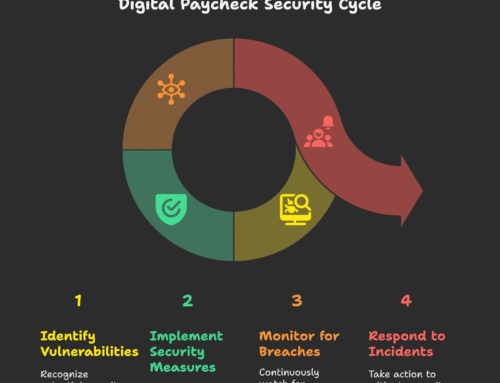Are you struggling to manage your payroll processes because of a lack of time or staff? Do you want to figure out how you can manage your payroll effectively?
We’ve got you.
From processing paychecks, keeping track of labor laws, maintaining compliance, calculating deductions and bonuses, and tracking all tax-related documentation, payroll is an aspect of business that is fraught with the potential for mistakes.
Even the smallest miscalculation can lead to employee dissatisfaction, legal issues, and monetary consequences.
So, how can you navigate all the moving parts of this back-of-the-house process without falling into the weeds or making mistakes?
Let’s find out.
7 Ways You Can Manage the Payroll of your Employees Effectively
Many employers are looking for ways to manage employees payroll more effectively. In fact, the need for better payroll management is higher than ever. For example, in 2020, the IRS revealed that more than $31 billion was collected from companies that were tax non-compliant.
So, companies must manage employees payroll with improved accuracy and time efficiency—meeting all tax and employment regulations—if they want to remain competitive and focus their attention on increasing their profitability and ROI.
Here are 7 ways companies can manage employees payroll effectively:

Money photo created by freepik – www.freepik.com
1. Update All Employee Data
You won’t issue a pay stub with inaccurate information, would you?
So, rather than ending up penalized for using inaccurate Social Security numbers, worker classification, benefits and deduction calculations, pretax contributions to benefits, tax withholding certificates, or Federal Insurance Contribution Act (FICA) taxes, you should make sure that every employee detail is correct.
You can do this by asking HR to request employees to fill out forms with their latest information or by initiating an online payroll system that tracks changes in employee details. But don’t rely on automated software too much, as sometimes employees might enter incorrect information into the system, which might not be detected until too late.
So, if you’re going to use an online payroll system to collect employee details, conduct regular payroll audits to reduce chances of error and costly mistakes.
2. Consider Creating a Payroll Calendar
Not only will creating a payroll calendar help you understand when your employees need to be paid but also help your team manage and execute payroll tasks efficiently. You can use cloud-hosted payroll automation software like Gusto, OnPay, or Dayforce HCM to automatically track the payroll.
As an alternative, you can also set up a spreadsheet to manage the payroll yourself. Just make sure you:
- Share that calendar with all relevant employees, i.e., managers, HR, etc.
- Highlight dates of importance, such as a Form W-4 reminder, so they’re easy to track.
- Confirm all details before putting them into writing.
You can also divide the payroll calendar into four sections: Q1, Q2, Q3, and Q4 to better track the payroll.
3. Keep Up With Federal and State Payroll Rules
Federal tax rules are always changing. So, business owners have a responsibility to keep up with all tax law updates and new tax legislation as well as changes in state and federal reporting requirements if they want to remain tax-compliant and skirt penalties.
They can either keep track of all tax legislation by themselves or hire an experienced tax attorney to limit the chance of penalties, as the IRS is very strict about the enforcement of compliance rules.
4. Track Employee Work Times and Attendance
Have you ever found yourself correcting employee timesheets at the end of a payroll period?
If so, then you’re not alone.
According to WorkPuls, 80 percent of employers had to correct more than 80 percent of timesheets that they received, leading to inefficiencies and productivity losses. The same survey also found that employers overpaid their employees by up to 200 billable hours because they didn’t use time tracking software.
So, employers not only lose money and tools by not keeping track of employee hours and attendance but also experience decreased efficiency, lower productivity as well as profitability, and a reduced return on investment.
Therefore, employers must calculate employee hours and attendance if they want to issue accurate paychecks to their employees. They can use time-tracking software like Time Doctor, Clockify, QuickBooks Time, Tick, and more to track users, projects, and reports, as well as create timesheets and payroll.
5. Standardize the Payroll Process
According to a survey by Intuit, more than 25 percent of American workers are plagued by payroll problems. Another survey from The Workforce Institute at Kronos Incorporated noted that more than 49 percent of Americans start searching for a new job after experiencing only two problems with their paycheck.
Thus, not only do more than 83 million American workers suffer from payroll management problems but half of them might leave their jobs for better prospects. This decrease in employee retention will not only reduce business productivity—as experienced workers leave—and slow business growth but also reduce ROI and eventually business profitability.
So, what can employers do to retain employees?
Employers should:
- Standardize the payroll process, making sure that every employee is asked to submit accurate information at the beginning of their tenure at the company.
- Have HR monitor payroll processes and move quickly to correct errors.
- Create a process flow chart to make sure that everyone is following a payroll schedule.
- Update the payroll quarterly to prevent errors.
6. Automate Your Payroll Process
According to the IRS Data Book, more than 40 percent of small to mid-sized businesses get penalized by the IRS on inaccurate payroll filings, paying an average of $845 in penalties. And in 2019, the IRS levied around 5 million penalties totaling $13.7 billion related to payroll taxes on employers.
These penalties not only affect the ROI, profitability, productivity, and efficiency of businesses but also have an adverse effect on employee retention, customer churn, and business growth. And most of the time, these penalties are the result of pen and paper or manual payroll systems.
So, employers can start using tools like PayStubsNow, Xero, Gusto, TheBestPayStubs QuickBooks, Namely, Humi, and Remote to mitigate errors, make deductions and payroll calculations quickly, calculate bonuses and expenses, and generate accurate pay stub without having to invest immense time and effort.
7. Outsource Your Payroll Management
To every business, time is money, and spending uncountable hours fixing the payroll at the cost of business growth is not a productive way to run a business. According to a survey by QuickBooks, business owners spend upwards of 4.5 hours every month or 21 days every year calculating and filing payroll taxes.
But the story doesn’t end there.
In the 2020 fiscal year, the IRS levied almost $31,4 billion in penalties related to payroll management on businesses. Some businesses went out of money to pay these penalties, while others lost employees to other companies.
So, rather than losing money or employees and reducing business profitability, consider outsourcing your payroll to a third party. Outsourcing the payroll decreases business costs, increases compliance, and reduces employee churn as well as the time spent on managing the payroll every month—time which you could utilize somewhere else.
Wrapping Up
Payroll management is difficult, and you can often drown in the weeds while you’re doing it. But an efficient payroll process can help you navigate the same weeds both efficiently and productively, which not only makes your employees happier, allows you to remain compliant with tax laws, and skirts penalties but also enables you to chase your dreams.
So, rather than wondering what to do, try one of these tips—we guarantee they’ll help you make sweeping and worthwhile changes in your payroll management.






Leave A Comment